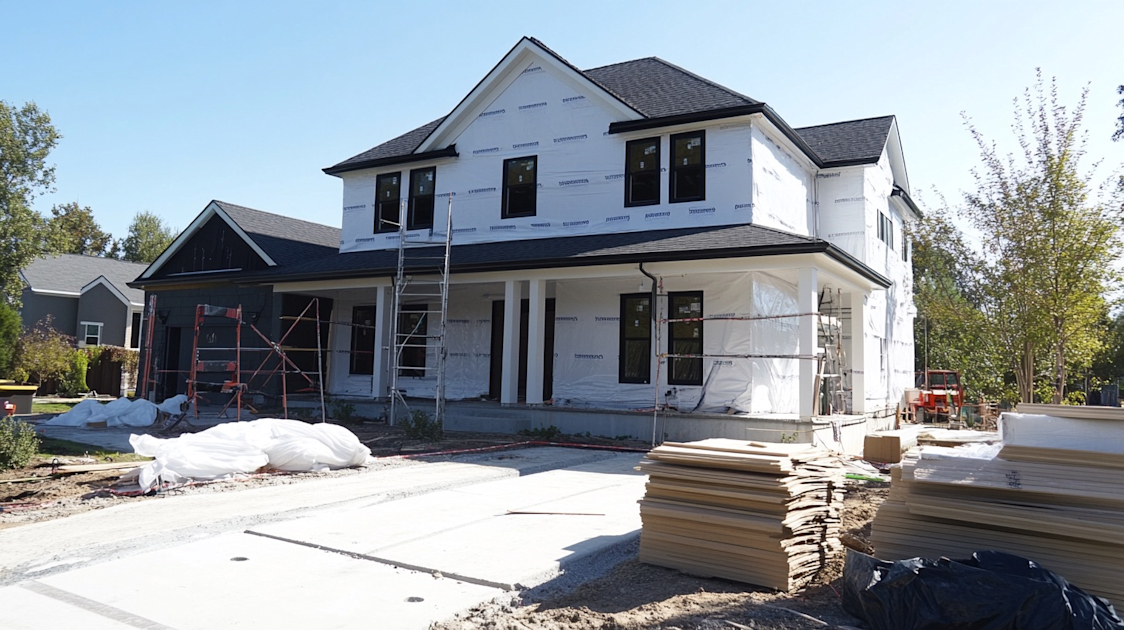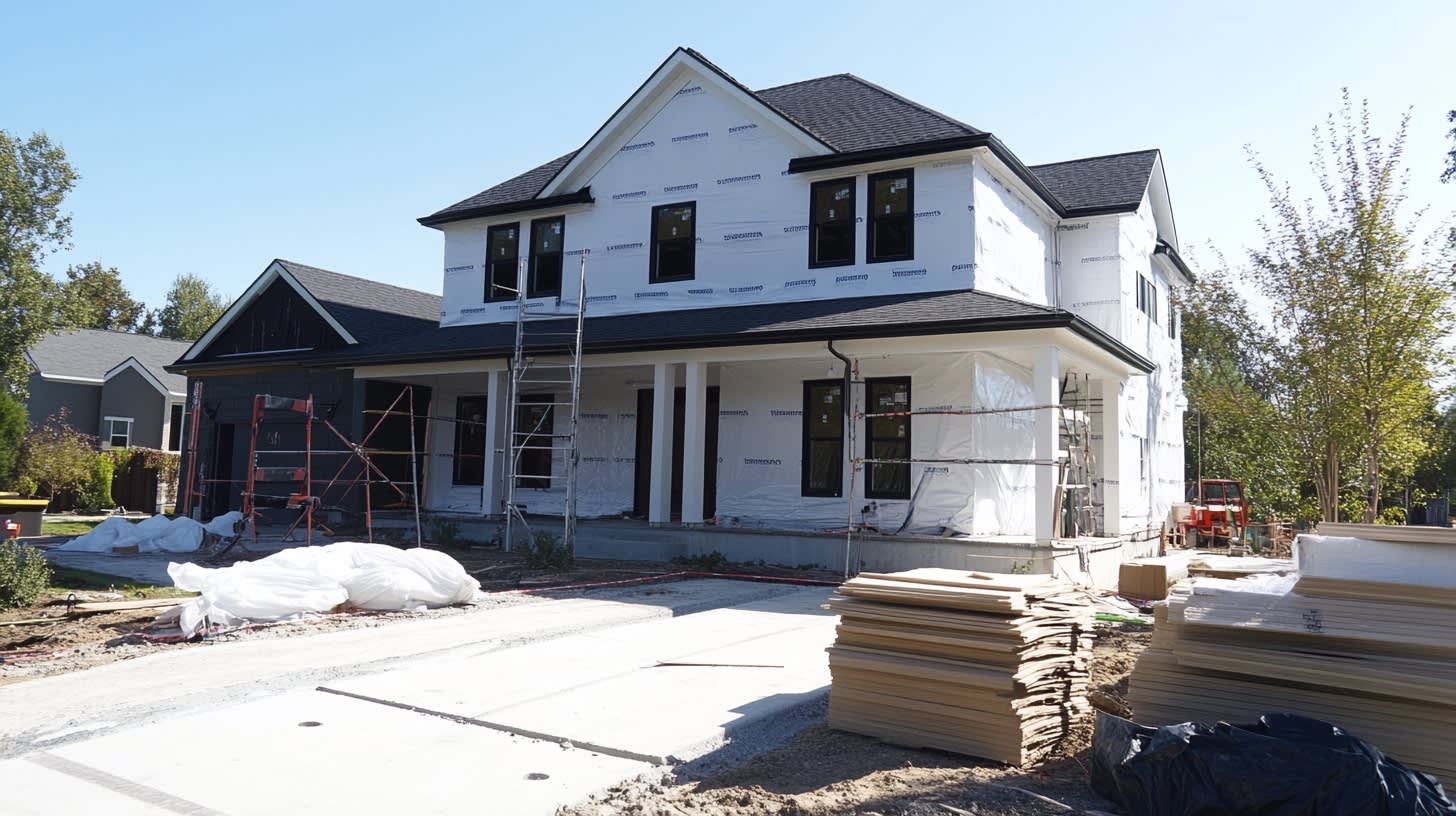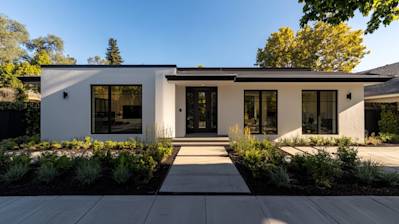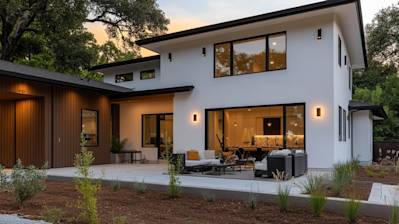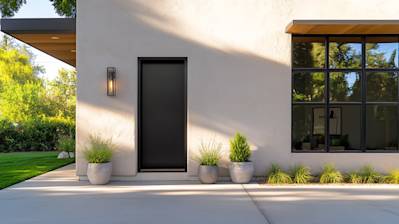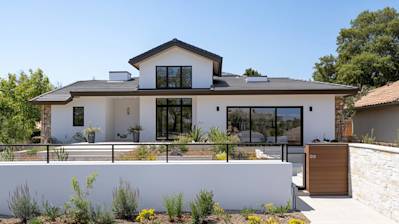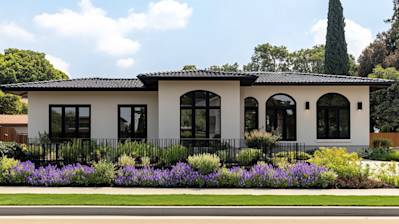The subject of insulation might seem straightforward initially, but with just a slight delve into the particulars, it often throws up some crucial terms. And one such term is a vapor barrier. As a homeowner, it is vital to understand the nuances related to vapor barriers: what it is, its applications, its types, the role it plays in energy efficiency, and how it's installed. This article sheds light on the in-depth understanding of vapor barriers, bringing clarity to their significance in your house infrastructure.
What is a Vapor Barrier?
A vapor barrier, also popularly known as a vapor retarder, is a layer or material specifically constructed to retard, restrict, or push back the rate at which water vapor diffuses. These are typically incorporated within wall assemblies, ceilings, floors, or roofs. Vapor barriers function to circumvent humidity and moisture from infiltrating the construction element, consequently curtailing structural harm and mold accumulation.
Recognizing the Role of Vapor Barriers in Insulation
Insulation is crucial for maintaining a comfortable and energy-efficient home. However, insulation can take in moisture, which might deteriorate its efficacy. Besides diminishing the insulating power (R-value), moist insulation can give rise to a massive host of complications such as mold, mildew, and even structural damage.
Hence, enters the vapor barrier. As a material designed to slow down vapor diffusion, it safeguards your insulation from dampness, thereby enhancing the overall longevity and performance of your insulating materials.
Comprehensive Guide to Different Types of Vapor Barriers
Vapor barriers come in different forms, suited to diverse needs. Here is a rundown of the common types:
Polyethylene Sheet: This is the most common type of vapor retarder. The sheet is generally 0.1mm thick and extraordinarily efficient in resisting moisture.
Kraft-faced or Foil-faced Insulation: These are types of insulation with a paper or foil facing, which serves as a vapor barrier.
Paint: Certain kinds of oil-based or latex paint can also act as a vapor barrier when painted over walls or ceilings.
Aluminum Foil: This is an efficient vapor barrier that also doubles as a radiant barrier, reflecting heat to boost energy efficiency.
Understanding the Mechanism of Vapor Barriers in Energy Efficiency
A vapor barrier increases energy efficiency in various ways. By keeping moisture at bay, it ensures that your insulation material stays dry and maintains its thermal resistance. This way, it heightens the effectiveness of your insulation, aiding in a reduction of energy consumption. Besides, when used jointly with radiant barriers like aluminum foil, it can also lessen heat gain, specifically in warm climates.
Installation of Vapor Barriers: Key Details
Surface Preparation
Before installing a vapor barrier, the surface must be cleaned thoroughly. Any protruding nails or screws need to be removed or hammered flat to prevent tears in the barrier.
Vapor Barrier Placement
The placement of a vapor barrier can vary based on the climate. In colder climates, the vapor barrier is usually installed on the interior side of the insulation to prevent warm, moist indoor air from condensing on the cool interior surface. Conversely, in hot, humid climates, it's often placed on the outside of the insulation to stop humid external air from reaching the cooler inside.
Securing the Vapor Barrier
The barrier must be overlapped and secured using special tape, ensuring a continuous barrier against moisture.
Frequently Asked Questions about Vapor Barrier
What are Vapor Barriers made of?
Vapor barriers can be made from various materials like polyethylene sheeting, foil-backed insulation materials, certain types of coated paper, thin plastic sheets, vinyl, metal sheets, and glass among others. The ideal material depends greatly on where and how you're planning to use the vapor barrier.
Why are Vapor Barriers important in construction?
In construction, vapor barriers play a crucial role in protecting a building’s interior from moisture damage like warping, swelling, mold and mildew build-up, and general structural degeneration. By preventing this moisture from moving from one area to another, vapor barriers help keep structures sound and prolong their lifespan.
How should Vapor Barriers be installed?
When installing vapor barriers, it’s essential to ensure they’re placed on the warm side of the insulating material. This placement helps prevent condensation, which can lead to structural damage over time. It’s also critical to seal all seams, edges, penetrations, and any potential leaks in the barrier to achieve effective moisture control.
What is the difference between Vapor Barriers and Vapor Retarders?
The terms "vapor barrier" and "vapor retarder" are often used interchangeably. However, there is a slight difference. A vapor barrier is a material with a permeability of 0.1 perm or less, which virtually stops all vapor transmission. On the other hand, a vapor retarder restricts the flow of water vapor (with a permeability above 0.1 but below 1.0 perm), but doesn't completely stop it.
Are Vapor Barriers necessary in all climates?
Whether a vapor barrier is necessary depends on the climate. In cold climates, for example, interior vapor barriers are necessary to keep indoor-generated moisture from getting into walls. In hot, humid climates, the vapor barrier requires installation on the exterior side of the building to prevent outside moisture from entering. In mixed climates, a more careful analysis might be needed to determine the necessity and placement of a vapor barrier.
Are there different types of Vapor Barriers?
Yes, there are different types of vapor barriers available. They are categorized based on their material composition and purpose, including polyethylene vapor barriers, foil vapor barriers, and paper-backed vapor barriers. Your choice of the type should depend on your specific moisture control needs as well as your budget.
How much do Vapor Barriers cost?
The cost of vapor barriers depends on the type of barrier and its quality, as well as how and where it's installed. For a general range, typical plastic sheeting as a vapor barrier can cost between 20 cents to 50 cents a square foot. Do remember that professional installation may carry additional costs.
What happens if a Vapor Barrier is installed incorrectly?
If a vapor barrier is installed incorrectly, it can result in trapped moisture, which can result in peeling paint, rotting wood, mold, and mildew growth, which can not only be harmful to your building’s structure, but also pose health risks. In extreme cases, the buildup of moisture can also lead to structural instability.
Pros of Vapor Barriers
Essential for moisture control
A significant advantage of using vapor barriers is their role in moisture control. They can be instrumental in preventing water vapor diffusion into building assemblies like walls, roofs, and floors.
Reducing dampness
Vapor barriers can significantly reduce dampness in any building or structure. They can help halt moisture that could otherwise navigate through wall cavities or other surfaces, preventing many issues related to dampness.
Preventing mold growth
By regulating moisture in a building, vapor barriers can help prevent mold growth. Mold often thrives in damp, dark places, and by reducing moisture, one can significantly control mold breeding.
Increasing structural stability
Apart from moisture control, vapor barriers contribute to the overall structural stability of a building or structure. These barriers can help prevent potential damage caused by moisture or water vapor.
Ensuring longevity
One of the greatest advantages of vapor barriers is that they contribute to the longevity of the building or structure. They can protect the internal structures from moisture buildup over time, maximizing their lifespan.
Saving on repair costs
In the long run, vapor barriers can potentially save on significant costs of repair related to moisture damage. Whether it be cracked paint, warped wood, or mold infestation, vapor barriers can prevent several potential issues down the line.
Cons of Vapor Barriers
Difficulty in installation
One of the significant drawbacks of vapor barriers is that they can be tricky to install. If done incorrectly, they may introduce moisture problems instead of solving them.
Requires professional expertise
Installing a vapor barrier can involve considerable professional expertise. Mistakes made during installation can cause the vapor barrier to be less effective, thus making it a project unsuitable for the inexperienced DIYer.
Unexpected moisture buildup
While vapor barriers are used to prevent moisture buildup, if installed or used improperly, they could potentially trap moisture within the barrier. This can create a range of problems from dampness in walls to mold growth and structural damage.
Increased risk of rot
Because of the possibility of unexpected moisture buildup, there's an increased risk of rot developing within the building structure due to the stagnant moisture. This can affect the durability of the building in the long run.
Limited versatility
Vapor barriers are not a one-size-fits-all solution. A barrier that works well in one climate might not do well in another. Depending on the climate zone, the type and placement of the vapor barrier must be carefully considered, or it might lead to more issues than it solves.
Not suitable for all climates
In dry climates, a vapor barrier might not be necessary and could even be detrimental to the building. Likewise, in mixed climates where temperatures fluctuate across the year, the position of the vapor barrier can play a critical role in its effectiveness.
Increased Costs
Installing a vapor barrier is an additional cost to your construction budget. Not only the material itself but the professional consultation and installation can add up and might not always provide the return on investment in all types of buildings or climates.
Regular inspections
To ensure the effectiveness of the vapor barrier, regular inspections need to be carried out. This can lead to extra cost over time. Any damage or failure of the vapor barrier can lead to extensive repairs and potentially severe structural damage.
Summary
So, there you have it. Vapor barriers are essential components in construction, primarily designed to prevent moisture from passing through walls, ceilings, and floors. They provide a valuable solution to control moisture, reducing the risk of water damage and mold growth in our homes, offices, and other buildings.
Let's take a brief look at the benefits again. The role of a vapor barrier goes beyond just blocking water vapor. They also help to maintain the insulation performance, prevent wall dampening and reduce energy consumption by preventing cold air from your air conditioner or warm air from your heater from escaping. Pretty important stuff, right?
Lastly, keep in mind that proper installation is crucial. It's not just a simple task of sticking the barrier up and hoping it does the job. Instead, to make the most out of this valuable tool, it needs to be installed correctly. A poorly installed vapor barrier might still let moisture seep through, which defeats the purpose. With all these in mind, the importance of a well-placed vapor barrier can't be underestimated.
About Atlas Stucco
Atlas Stucco is a locally-owned business in Sacramento, CA with over 20 years of experience in the stucco industry. We specialize in providing high-quality stucco application, repair, and finishing solutions to both residential and commercial properties in and around Sacramento. Over the years, Atlas Stucco has built a strong reputation for delivering exceptional craftsmanship combined with superior customer service. We take pride in the work we do and aim to leave all of our customers 100% satisfied. Trust us for all your stucco needs.
Tags: moisture control, insulation, building material,

